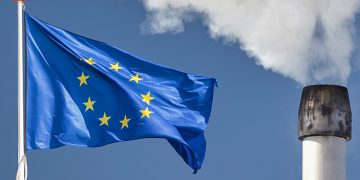There are a number of factors that need to be considered in order to effectively reduce the risks associated with enclosed spaces, notes Capt. Akshat Arora, Standard Club’s Senior Surveyor of Loss Prevention.
Although the regulatory requirements are well laid out, and safety standards should be improving, the increasing trend of enclosed space related casualty statistics highlight the importance of training. In the following exclusive interview with SAFETY4SEA, Capt. Arora reminds to ship operators all key areas of attention in order to raise awareness on enclosed space risks.
SAFETY4SEA: What are the key challenges with regards to enclosed spaces onboard and the lessons learned from the latest related accidents?
Akshat Arora: Investigations into recent enclosed space-related accidents indicate that most are caused on-board dry cargo ships; and that several of such incidents were easily preventable if proper procedures were followed, both on the ship and on the shore side.
From the ship’s side, the root cause is often failure to follow established procedures, either due to insufficient knowledge of, or disregard for, the need to take safety precautions. As many toxic gases or vapours cannot be seen or smelt, it is vital to remember that one should never trust his/her senses to determine if the atmosphere is safe. Instead, correct entry procedures should be followed. There have been a number of ill-attempted rescue cases, where crew in an urgent attempt to render aid to their co-worker, rush into enclosed spaces without proper care for themselves – adding to an already tragic situation.
From the shore side, the stevedores need to be aware of these hazards too. Furthermore, it is noted that the shippers are not necessarily aware of the IMSBC or IMDG code requirements; and quite often the cargo is misdeclared. There are other commercial factors, like unclear instructions or lack of clarity on who is responsible to provide suitable gas detectors and/or other personal protective equipment.
Due to the pandemic, there are more instances of crew being tasked to handle fumigant materials. This means that ship operators and crew, who do not have the necessary expertise to handle toxic materials, are exposed to a new and risky operational environment.
S4S: What issues related to reducing the risk of enclosed spaces should the industry consider?
A.A.: There are a number of factors that need to be considered in order to effectively reduce the risks associated with enclosed spaces. One of which is related to the design aspect of confined spaces, i.e. improving the ship’s design to allow easy access, fast evacuation, and quick venting of confined spaces.
Progress can also be made through technology. Biometric scanning, electronic tagging, sentry watch, man-down alarms, remote inspection using drones or fitting sensors for atmosphere measurement and personnel tracking are some of the advances in technology that can be considered to enhance safety control measures.
S4S: Standard Club has recently issued a guide on enclosed spaces. Could you tell us a few words about it? What are the key findings? Did you acknowledge any alarming trends?
A.A.: The Standard Club first launched its ‘Master’s Guide to Enclosed Space Entry’ in 2012. This publication was then revised in 2017, and recently its third edition was launched underlining the current issues and challenges. The guide is aimed at assisting seafarers entering enclosed spaces safely and preventing enclosed space-related casualties. It addresses the risks and causes related to enclosed space entry, and focuses on the most common issues that result in incidents, including:
- poor training
- failure to follow proper procedures for enclosed space entry
- failure to recognise the danger of an enclosed space
- tendency to trust physical senses and forego testing or checks
- attempts to save a co-worker leading to short cuts and failure to follow procedures
- failure to safely manage shore workers on board.
Observance of the principles and procedures outlined in this Master’s Guide will form a reliable basis to reduce the risks during enclosed space entry.
S4S: Why enclosed space deaths remain alarmingly high? Which is the major contributor factor for that development?
A.A.: Although the regulatory requirements are well laid out, and safety standards should be improving, the increasing trend of enclosed space related casualty statistics speak otherwise.
A review of incident causation reveals that the majority of casualties happened either due to lack of awareness or poor knowledge, it is vital that the training element is strengthened to improve crew awareness. In order to ensure that they don’t add to the statistics, it is imperative that the crew are able to identify and assess risks and implement appropriate mitigating measures.
S4S: What are the key challenges surrounding the training of seafarers today with regards to enclosed space entry?
A.A.: It is commonly noted that the standards of training and drills vary on every ship. While some companies may choose to invest in sophisticated training and education tools, many do not.
Usually on tankers, the level of specialized training is quite detailed and crew knowledge is regularly tested during the vetting inspections. There are a number of IMO model courses in place for the different types of tankers designed for the various proficiency levels. That is the reason why the officers and crew are, in general, well informed of the specific requirements of handling cargoes and well versed in their understanding of associated risks. Unfortunately, this is not the case on dry cargo ships. The dry cargo handling courses are usually very generic in nature and do not address the specific hazards associated with various kinds of dry cargoes, whether it be in packaged or in bulk form.
S4S: Do you believe there is necessary for the industry’s stakeholders to discuss further and consider effective measures of reducing this risk in form of best practices and/or more regulation?
A.A.: Yes – Despite the existing requirements, enclosed space fatalities are sadly enough a frequently recurring incident. It clearly depicts that a lot more needs to be done at industry level to effectively address this issue.
As the STCW convention is the driving factor in crew certification and training, we strongly endorse the need for having a mandatory enclosed space training and a few standardised IMO model courses for dry cargo ships that would assist in making seafarers aware of the risks, not just for enclosed spaces or fumigation, but for other pertinent issues like liquefaction, dynamic separation, cargo ventilation, steel cargo stowage etc.
Unfortunately, the IMO Resolution A.1050(27) objectives are solely ‘to encourage the adoption of safety procedures aimed at preventing casualties to ships’ personnel entering enclosed spaces where there may be an oxygen-deficient, oxygen-enriched, flammable and/or toxic atmosphere’. This resolution is not sufficiently broad, as there are also other hazards facing those entering an enclosed space.
In terms of atmospheric testing instruments, there is no requirement in SOLAS which specifies the number of gas detectors that should be maintained onboard. Due to this reason we commonly see minimum compliance by several ship operators, where just one set of gas detection equipment is provided onboard which is often kept safely for PSC inspections and not used when an enclosed space entry is made. Even when this equipment is used, full dependency is imposed upon the fact that its sensors are calibrated, and the instrument is functioning properly.
Additionally, IMO MSC. 1/Circ.1477 mentions that ‘given a ship’s specific characteristics and operations, additional atmospheric hazards in enclosed spaces may be present that may not be detected by the instruments recommended’. Basically, it is the company’s/ship’s responsibility to assess which additional instruments are required. However, we have seen a number of cases where cargo was fumigated and suitable gas detector tubes for measuring concentrations of the toxic fumigant gas were not provided. It is therefore suggested that the regulations surrounding this aspect are made clear and specific to effectively close the gaps.
S4S: Is there anything you would like to see operators do differently or better with regards to their awareness on enclosed space risks?
A.A.: Shipping companies must recognise the importance of training and invest in it. Careful thought must be put into how to systematically execute and effectively review the seafarers’ understanding of what has been taught. Likewise, the drills conducted on ships should be realistic, focussed and challenging; and not simply done to comply with the regulatory requirements.
In terms of company procedures, before any enclosed space entry is undertaken the normal risk assessment, pre-entry checklists, atmosphere checks and confined space entry permits should be completed. When doing so, emphasis should be on the demonstration of compliance, instead of just ticking the boxes. Lengthy procedures and checklists are less likely to be followed properly and more likely to become a paper exercise.
The views expressed in this article are solely those of the author and do not necessarily represent those of SAFETY4SEA and are for information sharing and discussion purposes only.































































